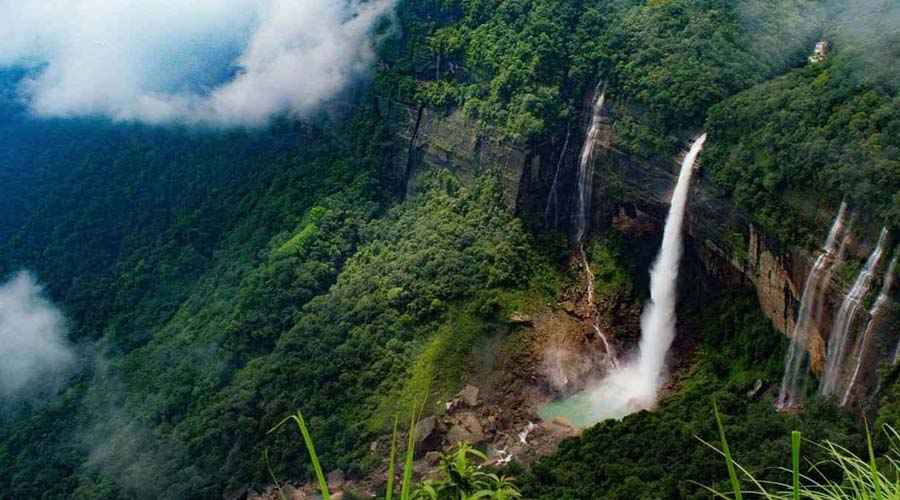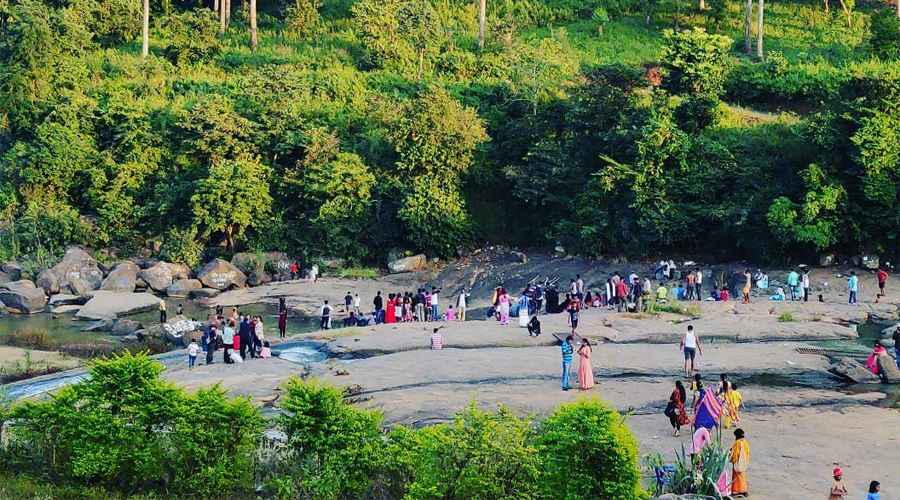India’s geographical diversity — from lush Western Ghats to the cloud-kissed hills of the Northeast — hides some of the most spectacular waterfalls in the world. These waterfalls don’t just mesmerize with their heights but also with the breathtaking landscapes surrounding them. Whether you are a nature photographer, a trekking enthusiast, or simply a traveler seeking peace, visiting the highest waterfalls in India promises an experience unlike any other.
Here’s a look at the top five highest waterfalls in India, their locations, unique characteristics, and what makes each a destination worth exploring.
1. Kunchikal Falls, Karnataka
Kunchikal Falls, located in the Shimoga district of Karnataka, holds the title of India’s highest waterfall, plunging from a massive height of around 455 meters (1,493 feet). This stunning natural wonder originates from the Varahi River and cascades through the dense forests of the Western Ghats.
What makes Kunchikal Falls unique is that it isn’t just a single drop—it’s a series of cascading tiers that create a thunderous spectacle during the monsoon. The region receives one of the highest rainfalls in the country, ensuring the waterfall’s volume swells dramatically between July and September.
However, Kunchikal Falls lies within a restricted area due to the presence of a hydroelectric power project near Hulikal. Travelers need special permission from the Karnataka Power Corporation to visit. Those who manage to get access are rewarded with an untouched natural environment teeming with rainforest vegetation, exotic birds, and a misty charm that remains unmatched.
- Nearest City: Udupi (about 110 km away)
- Best Time to Visit: July to October
- Fun Fact: The falls feed into the Mani Dam, which provides hydroelectric power to parts of Karnataka.
2. Barehipani Falls, Odisha
Tucked inside the Simlipal National Park in Mayurbhanj district, Barehipani Falls is the second-highest waterfall in India and the tallest in the eastern region. With an astonishing total height of about 399 meters (1,309 feet), it is a two-tiered waterfall cascading beautifully down rugged mountain ridges.
Barehipani originates from the Budhabalanga River before gracefully plunging into the deep gorge below. The dense Sal forests surrounding it make the sight even more enchanting, especially when viewed from a distance from the nearby viewpoints.
What sets Barehipani apart is the perfectly vertical second drop that looks surreal during the monsoon season when the water flow is at its peak. The fall transforms into a silver stream framed against green canopies, attracting both trekkers and photographers.
- Nearest City: Baripada (around 100 km away)
- Best Time to Visit: October to February (pleasant weather and accessible roads)
- Special Attraction: Wildlife enthusiasts can spot elephants, deer, and even tigers within Simlipal National Park.
3. Nohkalikai Falls, Meghalaya
The northeastern state of Meghalaya, known as the “Abode of Clouds,” shelters the third-highest waterfall in India — Nohkalikai Falls. Located near Cherrapunji, one of the world’s wettest places, Nohkalikai plunges from a height of about 340 meters (1,115 feet), forming a turquoise pool at its base.
The name “Nohkalikai” translates to “Jump of Ka Likai,” rooted in a local Khasi legend of a tragic woman named Likai. The legend adds a touch of melancholy and mystery to the site, drawing many curious visitors.
What truly makes Nohkalikai enchanting is the color of the pool, which changes from turquoise to green and sometimes brown depending on the season. The mist, the sound of rushing water, and panoramic views of the valley below make it a sight to remember.
- Nearest Town: Cherrapunji (about 7 km away)
- Best Time to Visit: September to October for lush greenery and full water flow
- Tip: Visit early morning for the best light conditions to photograph the fall.
4. Nohsngithiang (Seven Sisters) Falls, Meghalaya
Also located in Meghalaya, the Nohsngithiang Falls—popularly known as Seven Sisters Falls—is the fourth-highest waterfall in India, rising about 315 meters (1,033 feet). The name “Seven Sisters” comes from the seven distinct streams of water that flow side by side down the Khasi Hills.
These falls are seasonal and come to life during the monsoon when the streams gain intensity, creating a fascinating curtain-like cascade against a lush green cliff. Sunlight often reflects through the falling water, forming dazzling rainbows that make the view magical.
Nohsngithiang Falls lie near Mawsmai village in East Khasi Hills and are best enjoyed from a distance, where the seven separate streams can be clearly seen. It’s one of Meghalaya’s most visited attractions for both domestic and international tourists.
- Nearest Town: Cherrapunji (about 4 km away)
- Best Time to Visit: June to September during peak monsoon
- Perfect For: Nature photographers and monsoon travel enthusiasts
5. Dudhsagar Falls, Goa-Karnataka Border
Dudhsagar Falls, which means “Sea of Milk” in Hindi, takes the fifth spot on the list with a height of around 310 meters (1,020 feet). Located along the Mandovi River on the Goa–Karnataka border, it is one of India’s most famous and visually stunning waterfalls.
Dudhsagar is a four-tiered waterfall that creates the illusion of milky white streams tumbling down rocky cliffs — hence the name. What makes this location iconic is the scenic railway bridge that passes right in front of the falls, often captured in countless travel photographs and movies.
The waterfall is situated within the Bhagwan Mahaveer Wildlife Sanctuary and Mollem National Park, where visitors can also explore tropical forests and spot unique wildlife species. The journey to the waterfall is as thrilling as the sight itself, involving jeep safaris or treks through dense woods.
- Nearest City: Panaji (about 60 km away)
- Best Time to Visit: July to September (when the falls are in full flow)
- Travel Tip: The famous Chennai–Vasco da Gama train route offers an incredible view as it crosses the railway bridge near the falls.
Conclusion
From the thunderous roars of Kunchikal in Karnataka to the dreamlike sprays of Nohkalikai in Meghalaya, India’s tallest waterfalls display the country’s raw natural beauty and geological richness. These giants are not just water streams plunging from dizzying heights—they are ecosystems brimming with life, stories, and endless charm.
For travelers eager to explore beyond cities and beaches, visiting these waterfalls offers a refreshing escape into the heart of nature. Whether you love hiking through forest trails, clicking breathtaking photos, or simply standing still in awe of nature’s grandeur, the highest waterfalls of India promise memories that last a lifetime.

